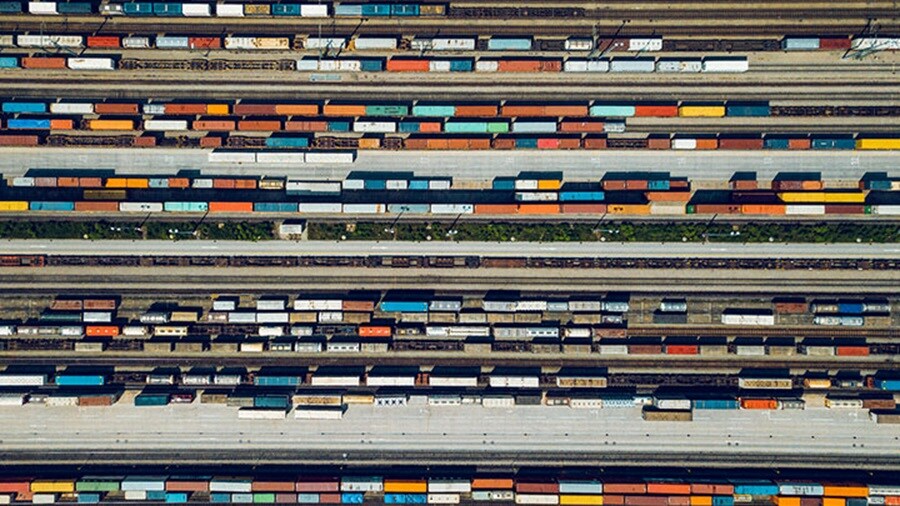All global markets were affected by the pandemic, but few were hit as hard as the technology sector. In fact, Covid had more of a negative impact on Europe’s technology industry than the 2008/2009 financial crisis, with production slumping to just 19% in the second quarter of 2020 – the biggest decline since the Second World War (Orgalim). After the pandemic subsided, there was hope that the market would quickly regulate itself again, but reality has been a different matter. With new challenges such as the conflict between Russia and Ukraine bringing enormous economic turbulence and supply chain disruptions, the market is still suffering from five major, unforeseen factors.
- High inflation - millions of consumers are cutting back on their spending
- Labour unrest – frequent strike action across Europe
- Energy shortages – rising prices for electricity and gas cause companies to cut back
- Geo-political uncertainty - causing even more disruptions and making calculations less feasible
- Extreme weather - damage and disruption to supply chains due to more frequent extremes

Reactions to these challenges
Despite recent strains, the general trend of the tech market’s past decade has developed upwards. According to Eurostat, total extra-EU trade (imports + exports) in high-tech products increased from €482 billion to €777 billion between 2011 and 2021. This corresponds to an average annual increase of 4.9%.
China and the USA remain the most important trading partners for the European market (Eurostat), although forecasts for 2023 look more subdued.
A forecast by Forrester predicts growth of only 3.6% for European technology spending this year - 170 basis points less than the previous forecast – thanks to the combination of high inflation, energy crisis and new possible geopolitical tensions.
The challenges of recent years have also highlighted just how problematic overdependence can be, with the traditional trade route from Asia coming under considerable pressure. As a result, many European tech companies are trying to become less dependent on Asia and North America and rely more on intra-European networking.
According to a recent WEF survey, 77% of economists expect companies to optimise their supply chains by diversifying their production rather than relying on a single source or country. Thus, the evolution could move from a supply chain to more of a supply network.
Regionalisation and re-thinking towards near-sourcing
In a world where global connection and communication is key, chips and semiconductors play a huge role. They are essential components of electronic devices, enabling advances not only in communications, but also in healthcare, military systems, transportation and energy. Therefore, the European dependency of chip production and semiconductor industry on China tends to be even more critical.

As a consequence, European companies are trying to shift the focus more and more to Europe. According to industrytoday, the European Commission has set a target of mobilising €43 billion in "policy-driven investment" for the semiconductor sector in the EU by 2030.
On top of this, regionalisation of supply chains is another important goal and over 90% of companies intend to implement this in the next three years. Regionalisation involves restructuring production into smaller blocks, i.e. moving it closer to where the products are sold. Suppliers and manufacturers will build new relationships with strategic, regional partners to form a more local supply chain that saves both money and time.
This development goes hand in hand with a shift in sourcing locations. A recent Reuters report shows that the electronics and technology sectors are particularly active in this area, partly because this sector has been hit hardest by delays in component supply chains. In semiconductors, many companies have recently had problems meeting demand and shipping key components from hubs in China. As a result, 88% of companies in this sector say they have changed their sourcing strategy.
An obvious example of this shift is the extensive investment by chipmakers in European locations in 2022. In the first quarter alone, Intel announced a major new fab in Germany, a design and research facility in France and a packaging and assembly site in Italy, alongside capacity expansion at an existing facility in Ireland. STMicroelectronics also announced plans for a large semiconductor fab in France and a wafer fab in Italy this year.
Supply chain consequences
The stronger European focus in the tech market will consequently change supply chains. The connections to and from Asia and North America will continue to dominate for the time being, but the intra-regional aspect is gaining more importance through regionalisation and near-sourcing. Consequently, the logistics industry must react flexibly and respond with more regional options.
When it comes to European or near-European partners for the segment, Turkey is the largest market, according to OEC, sitting as the 29th biggest exporter in the world in 2020. Looking at the trade with the EU, Turkey's main exports are automobiles ($10.1 billion) and motor vehicle parts and accessories ($4.59 billion).

In Europe, these are mainly exported to Germany, the UK and Italy. Besides Turkey, Egypt and Poland are currently gaining importance, especially for exports.
This development results in a stronger focus on intermodal and cross-border rail. Current studies show that this option could be the future of Europe's commercial transport from a sustainability perspective. By intelligently and seamlessly linking the three classic modes of transport, greenhouse gas emissions can be reduced by up to 90% - compared to long-distance truck transport alone - and energy efficiency can be increased by up to 70%.
Rail is undoubtedly the most sustainable mode of transport, as 80% of rail transport in Europe is already powered by electricity. According to a white paper by Railfreightforward, rail freight’s specific energy consumption is six times lower per tonne-kilometre than trucking. The main reason for this outstanding energy efficiency of rail is the drastically lower friction when operating steel wheels on steel rails, while larger capacities add further benefits.
Alternative cross border rail Europe (CBRE) solutions can help customers to overcome current pains, such as structural drivers’ shortage or fuel rates increase. With CBRE, they can accelerate carbon-neutral logistics with lower emission levels, while maintaining cost predictability and a high degree of flexibility to supply chain speed in multi-modal options. Building a green and integrated multi-modal product from and to hub structures will connect overland rail transport to our warehouse footprint and distribution.
The challenge here so far is the non-uniformity: railway systems have been built and operated as national systems. Currently, ERA (European Union Agency for Railways) is working on solutions for a further adaptation of the technical specifications for interoperability (TSI) and a reduction of national regulations in order to make cross-border rail even more efficient and fluid.
Short sea shipping is also experiencing a growing role. This kind of transport over relatively short distances, for example within a continent, offers large capacities, a greater range than a truck and high safety standards.
Most of Europe’s tech industry has recognised and accepted the current challenges and is already responding to them. With continued economic and geopolitical uncertainty, as well as a growing risk of supply chain disruptions, European technology companies are calling out for future-oriented solutions that focus on flexibility, resilience and sustainability. If the market strengthens its focus on greater independence and a stronger intra-regional connection, this offers enormous opportunities.
Anything you need, we’re here to help
I agree to receive logistics related news and marketing updates by email, phone, messaging services (e.g. WhatsApp) and other digital platforms, including but not limited to social media (e.g., LinkedIn) from A. P. Moller-Maersk and its affiliated companies (see latest company overview). I understand that I can opt out of such Maersk communications at any time by clicking the unsubscribe link. To see how we use your personal data, please read our Privacy Notification.
By completing this form, you confirm that you agree to the use of your personal data by Maersk as described in our Privacy Notification.
